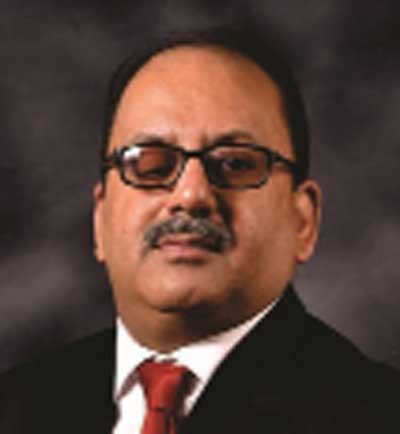Pakistan and China historically have so many things in common that we cannot count them just on our fingertips. To begin with, both countries have so much rich history that if one traces it back, it will merge to one of the famous Chinese Dynasties, called the “Yuan Dynasty.” During the 13thcentury, under the Mongol rules spanning from 1279 to 1368, it was considered the biggest empire of the dynastic period.
China is one of the most ancient countries in the world with more than 250,000 years history of its existence. When China was at its peak during its dynastic period, it used to be called the “Middle Kingdom”. After the fall of the Qing Dynasty in 1912, the struggle for the modern China started and after many years of the ferocious and relentless struggles, finally in 1949 modern Peoples Republic of China(PRC) was established under the leadership of Chairman Mao Zedong and Premier Zhou Enlai.
After the creation of the PRC on October 1st, 1949, Pakistan recognized it just after 3 months of its establishment on January 1, 1950. In 1971, Pakistan assisted USA and China for establishing direct communications between the two countries, initially by the Secretary of State Henry Kissinger’s visits that paved the way for the historic visit in 1976 by President Nixon to China and meeting with Chairman Mao Zedong and Premier Zhou Enlai in Beijing. After the meeting, in a historic joint communiqué, the USA acknowledged that there was “One China and that Taiwan was part of China.” After 3 years in the making, finally on January 1st, 1979, the USA established its diplomatic relations with the PRC that helped China to open itself for dealing with the westand rest of the world in trading, cultural exchanges and establishing bilateral agreements.
Pakistan is almost as old as the modern China is! As is described above, the modern China with its new name, Peoples’ Republic of China (PRC) was established in 1949 while Pakistan was founded in 1947. Even though, China is two years younger than Pakistan, but it has made so much progress that it is unprecedented in the history of the nations! Thus, Pakistan can learn a lot from China that happens to be not only itsbest neighbor but also has strong common roots through the ancient “Silk Road.” Just like in Pakistan, China has so many ethnic groups, different dialectsare spoken, many faiths are practiced, and both have rich cultural heritage. Like in Pakistan, the life in China also revolves around the family where many generations are still living at the same place. Historically speaking, with agriculture-basedeconomy, peasants/farmers were controlled and ruled by the feudal lords and privileged classes. Peasants were denied any opportunities and the upward mobility in the society was not allowed. By moving from rural areas to urban areas, the people were denied their basic rights of education, health, property ownership, etc. under the class system, called the “Houka”(domicile).
Compared to the other world powers, China has been pursuingquite different approach,called the “soft power” for creating its allies and friends. In many cases, China has technology and expertise that is as good if not better than the other technologically advanced countries, like the USA and the Westernnations. In the infrastructure sector, China has not only the technological advantage but also vast proven experience in building highways, dams, tunnels,and construction ofhigh-speedrail& mass transit networks. Not to mention other milestones ofsuperhigh-speed network (5G), artificial intelligence (AI), machine learning (ML), coal to petrochemical conversion, longer lasting batteries, solar power, electric vehicles (EV), etc.
Since assuming the leadership of China, President Xi Jinping hascontinuedreformingits society, economy, foreign policy, and longer-term aspirations. By introducing political reforms and going after the corrupt officials, President Xi Jinping has achieved the popularity in the masses that has been unprecedentedafter President Dao Xiaoping’sopening of China for the foreign direct investments (FDI) in 1978.
Under the current geo-political maneuvering, Pakistan is very well positioned to stay aligned with the time and time again proven friend, China. President Xi Jinping’soriginal “One Belt-OneRoad” initiativeintroduction in 2013 andlater re-naming itto “Belt & Road Initiative”is the largest project in human history coveringall the four corners of the world. The main spirit of the project as defined is to foster and deepen further the spirit of globalization that has benefitted China. Through the BRI, China wants to share its success with all the nations, including the neglected/forgotten region of Africa, by building infrastructure, hospitals, schools, bridges, railroads, ports, and airports.Pakistan being one of the initial supporters and strategic partners right from the beginning is very well positioned as one of the main pillars of the BRI. Through the CPEC, the “Flagship” andone of the corner stones of the BRI project, and through the modernization & expansion of the old Gwadar port (the maritime shining star), China is fully committed for its success. The Gwadar port is the most strategic milestones of the maritime and is considered as the vital and the most indispensable project for the growth and robust future of Chinese economy.Through the Gwadar port, China will have access to rest of the 50% of the worldpopulation for trade &commerce by reducing the distance& the transit time significantlyto and from China, including the landlocked Eurasian countries.
The projects initially covered under the CPEC were expansion/upgrading/building of the roads network, revamping of railway system, fiber optic cables lay down, construction of energy pipeline, formation of industrial clusters, and creation of the specialized economic zones. In the beginning, the CPEC was a project of $46 billionbut by 2017, it reached to $62 billion. By some estimates, by year 2030, it will likely reach to a grand total value of $100 billion, as more and more projects will continue to be added to its original list.All these projects are entirely funded by China and its banks. According to Pakistan Ministry of Planning& Development, CPEC has already created about 80,000 direct jobs(pre COVID-19)and by some conservative estimates, the CPEC will create around 2, 320,000 jobs, once fully completed. Thesenewly created jobs have already helped Pakistan to reduce its unemployment by 2.6% from the officialrate of 5.9%at that time (prior to the COVID-19).
The CPEC is the extension of the ancient “Silk Road”blueprint where exchange of ideas and goods &services forimproving standard of living, quality of life, cooperation, growth, innovation, and prosperity will be thriving. Once fully operational, the CPEC will extend its reach from Gwadar port in the Arabian Gulf to China’s North West, Xinjian Muslim region, creating a trading bloc of about 3 billion people.
Now is the right time for Pakistan to pick and choose and ask China to help build and modernize its industrial infrastructureabove and beyond the CPEC through JV partnerships with its private enterprises and entrepreneursto becoming China’sstrategic supply chain “steel brother” to supporting itsnewly created aircraft, aerospace, auto, solar & wind energy, robotics, artificial intelligence (AI), and machine learning (ML) industries. Pakistan has highly skilled labor that can be easily employed with a little training or apprenticeshipsin these periphery industries and it will give China a competitive cost advantage over the European parts suppliers forlaying thefoundation for the 3rdindustrial revolution that is in its infancy right now.Also, Pakistan should secure desperately needed IT know how and digitalinfrastructurein modernizing its outdated and rusty technology. This will help Pakistan to meet the challenges of the digital world and to participate in the 3rdindustrial revolutionalso thatis already disrupting the norm of the current century. These basic changes will not only help to reduce the pollution and the chronic diseases like asthma, COPD, etc. but will also create millions of high paying jobs that will help Pakistani youths for gainful employmentthat in turn will result into creation of a robust economy, prosperity, and improved standard of living for every citizens and a membership into a different league of nations.
Pakistan can also borrow China’s firsthand experience in automation, cost reduction, improved outputs, quality control of the existing industries and to streamline its manufacturing from labor intensive commodities to higher value-added products. This will greatly help not only to become self-sufficient in many of the everyday use essential commodities for the domestic consumption but also for the exports. In just about ten years, China has gone througha similar path by elevating its manufacturing base from low priced commodities to higher value-addedsemi-specialties and digitized value chains.
In order for Pakistan to be successful in these ambitions and ready for the 3rd industrial revolution, Pakistani leaders and itslegislative bodiesmust focus in eliminating the extreme povertyfrom the society through the reforms as Chinahas done for its nation. According to the World Bank, China has lifted out more than 850 million of its citizens out of the poverty through economic reforms and creating millions of new jobs in the construction, communication, infrastructure, andmass transit sectors. Similarly, Pakistan must eradicate the deep-rootedcorruption from all levels of the society just like China has been doing for the last few years. Under President Xi Jinping, anti-corruption drive has been targeted equally against the “tigers and the flies”of the society without any distinctions or concessions because of anyone’s party seniority, social status, or official position. Under the drive, suspected corrupt politicians and party (CCP) officials of all levelshave been removed from their positions and after theirprosecutions have been sent to the jails.According to the CSIS, under President’s Xi’s anti-corruption drive, hundreds of thousands of thesuspects,from every level of the society, have been apprehended and prosecuted. As some wiseman once said, the corruption not only takes the wealth out of the countryleaving behindit to bankruptcy, but it also demoralizes & humiliates its citizens!
By visualizingChina and Pakistan maps closely, it will stand out that the two nations are not only the “steel brothers” but are alsoan integral part of the “rooster”, one of the Zodiac signs of Chinese Ancient Astrology.
Sign in
Welcome! Log into your account
Forgot your password? Get help
Password recovery
Recover your password
A password will be e-mailed to you.




